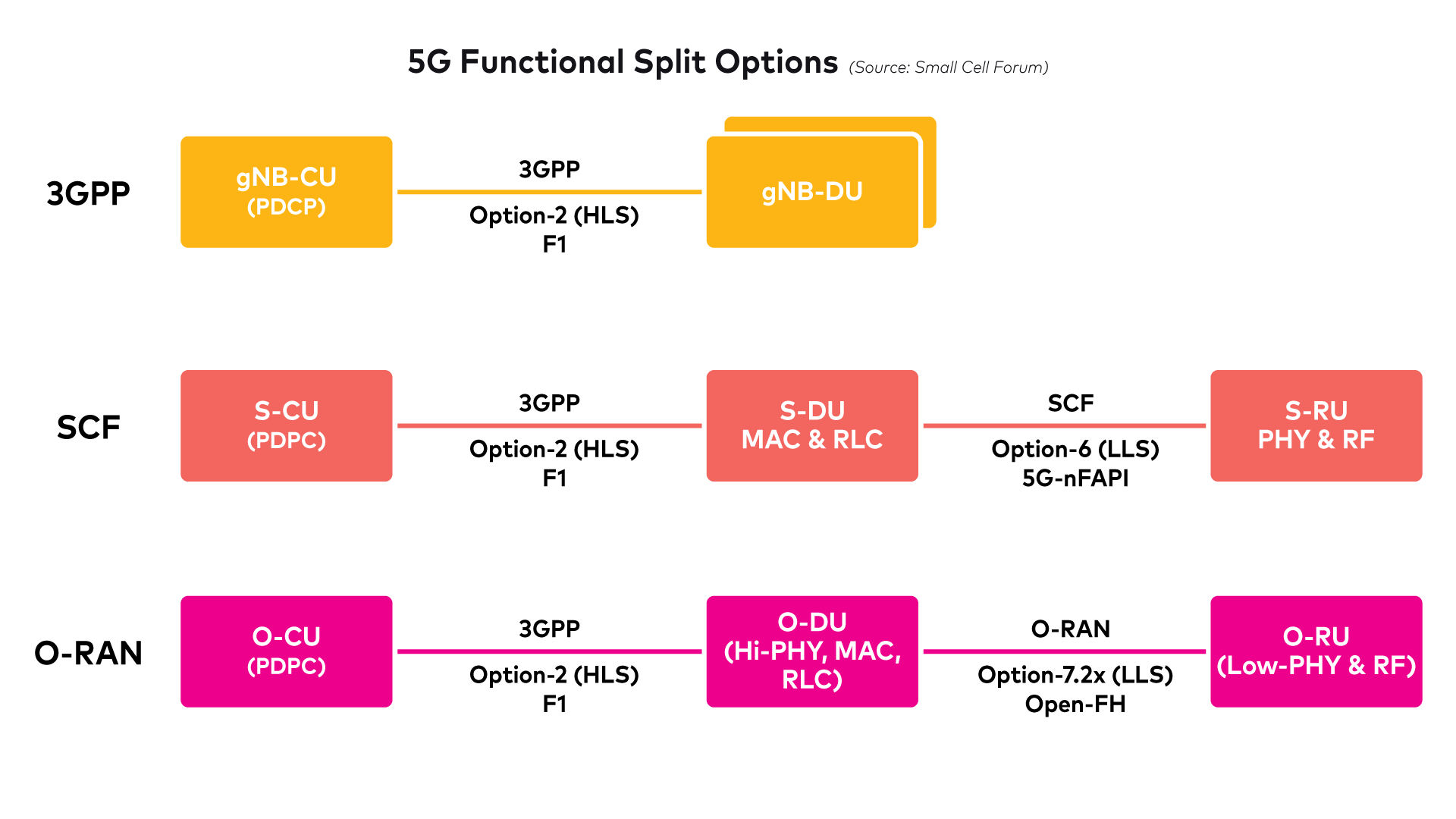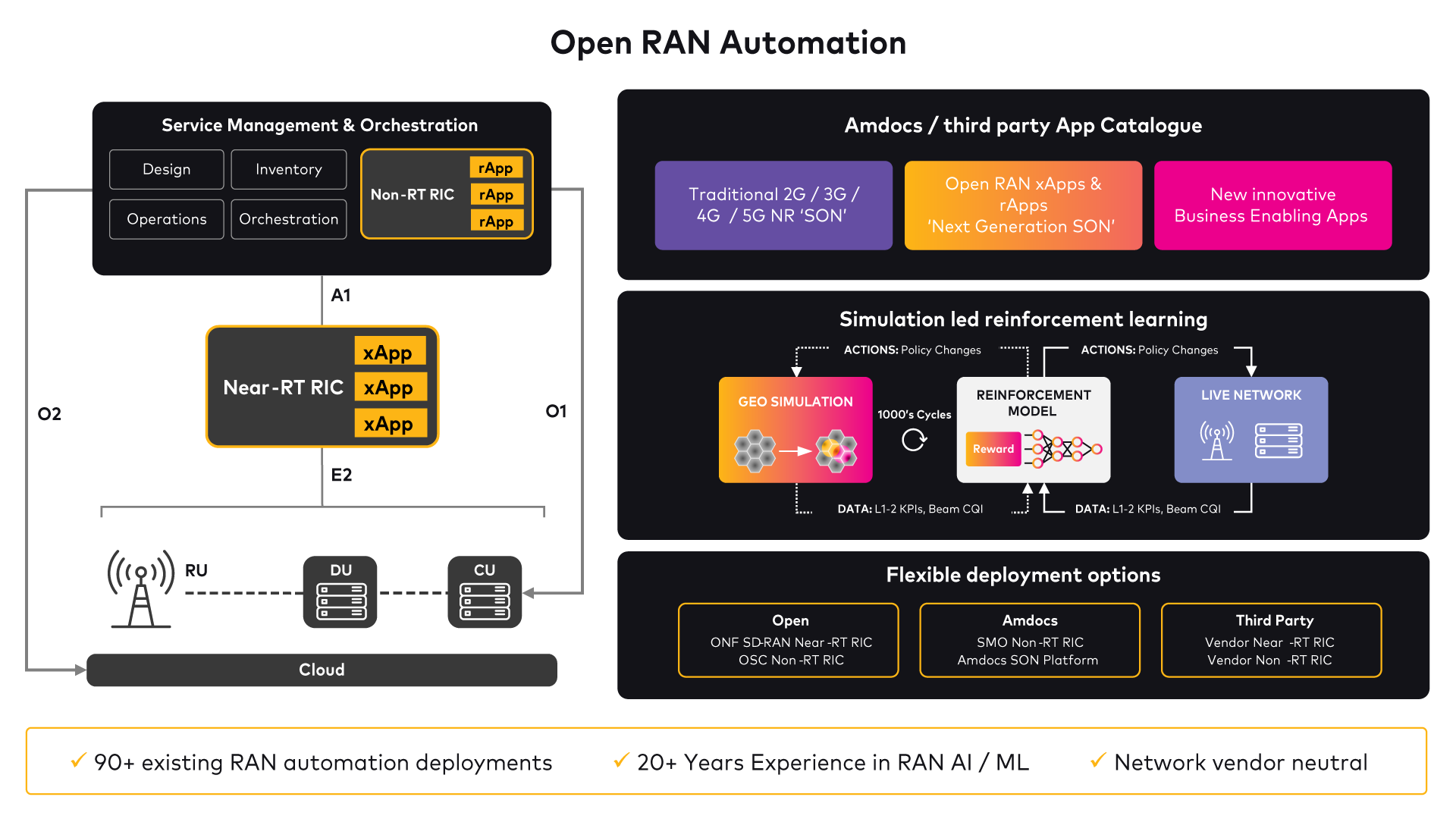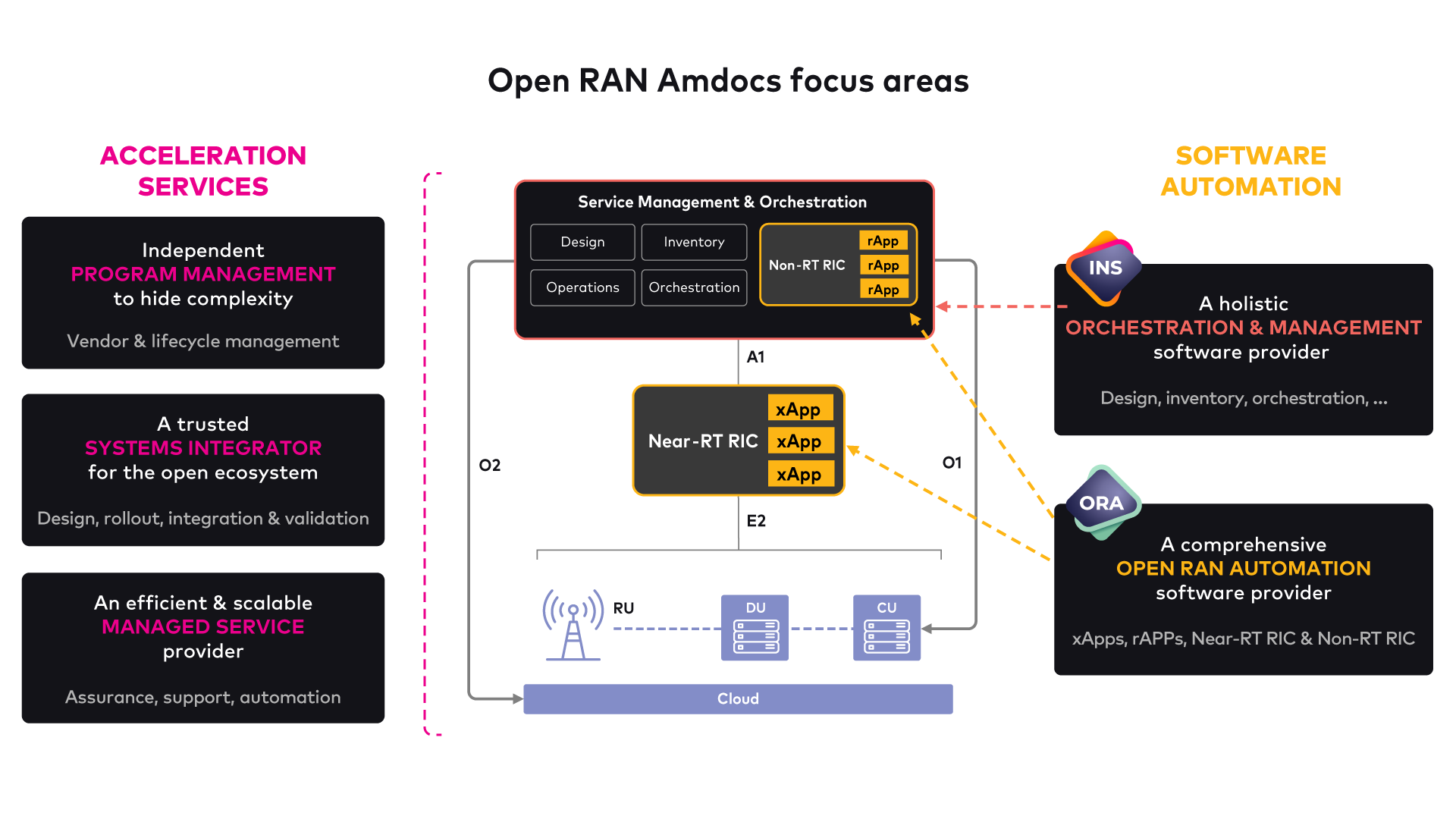Interoperability and agnostic features are some of the driving factors behind future network services and functionality. Hyperscaler ecosystems alleviate the challenges in optimizing investments, operational success and improve infrastructure to deliver enhanced customer experiences.
Intro
RANs are essential locations of wireless connection and service concentration for mobile network operators (MNOs) and comprise a considerable amount of network Capex investments. RANs perform exhaustive and complex processing (radio & spectrum management, mobility management, security, security, and data encryption, etc..). It will continue to expand when edge and more advanced 5G use cases with stringent speed and latency requirements are introduced.
RAN modernization uses network function virtualization and cloudification (cloud-native development). 5G Mobile xRAN uses virtualization (vRAN/cloud-RAN) and cloud-native (Open RAN) to disaggregate, cutting costs and improving service infrastructure. Cloud-RAN uses cloud-native or virtualization from one vendor and contains proprietary APIs, interfaces, solution concepts, and tools (orchestration, monitoring, and data analytics). Open RAN is cloud-native, open-source, and vendor-neutral.
Let’s review what separates vRAN and Open RAN but also how do they converge.
When cloud meets with RAN: Virtual RAN
Network functions virtualization allowed CSPs to study how separating hardware and software could lower their total cost of ownership (TCO), starting the disaggregation trend. Virtual Radio Access Network, an extension of NFV based on agile and cloud-native ideas, offers mobile network operators (MNOs) increased operational efficiency and flexibility to accommodate a broad variety of customer demands.
The 5G Core network is cloud-native, but its functions are containers or microservices that use open 3GPP interfaces. 5G Baseband Units (BBUs) formerly ran on gNodeB hardware platforms (gNBs). RAN disaggregation would break the technological silo and reduce Capex and Opex by switching to COTS devices. letting gNBs' virtual central unit (vDU) and virtual distributed unit (vDU) function separately.
vRAN solves several equations for MNOs, including their reliance on proprietary hardware for CU and DU functions. Second, RAN virtualization or cloud-native containerization increases the hardware, software, and service integration of the service orchestration platform. Lastly, RAN adheres to agile and cloud ideals that encourage cloud innovation, hence assuring domain consistency. Nevertheless, vRAN is dependent on proprietary vendor software components with restricted API interfaces and limited hardware options, limiting MNOs' capacity to diversify and innovate and potentially impacting the supply chain.
How does it differ from Open RAN?
A multi-vendor and automated RAN: Open RAN
Open Radio Access Networks (O-RAN) is revolutionizing mobile networks even further. In contrast to vRAN, O-RAN completely exploits cloud-native concepts to further disaggregate either conventional RAN systems or augment the virtual RAN (vRAN) to a near-final state. By offering open functionalities such as O-RU (Open Radio Unit), O-DU (Open Distributed Unit), CU (Central Unit), and O-Cloud, O-RAN encourages innovation (Open Cloud).
The O-RAN alliance's consensus promotes innovation via service and data intelligence and openness. It is also moving the mobile industry towards a multi-vendor, interoperable, and autonomous RAN environment with open APIs and fronthaul and mid-haul interfaces to speed cost savings, performance improvements, and operational optimization.
The O-RAN has two primary benefits. First, a clear cloud-native is a method for ensuring that cloud-native principles would ease cross-domain mobile operations. Second, the Open RAN alliance strategy introduces a significant advancement in RAN automation via service management and orchestration (SMO). Simply described, the SMO is a platform for RAN automation; hierarchically speaking, it is a component of OSS and comes under the umbrella of end-to-end or multi-domain service orchestration.
The SMO framework facilitates the lifecycle management of all cloud-native O-RAN network operations (O-RU, O-DU, O-CU and O-Cloud). The SMO also incorporates the RAN intelligent controller, a vital element of the O-RAN design. The significance of the RIC is determined by its capacity to facilitate intelligent decision-making utilizing AI and ML (machine learning). The conventional method to comprehend the function of the RIC in O-RAN is to imagine the RAN as a human body and the RIC as its brain.
Enabling RIC functions necessitates that CSPs rely on open APIs and interfaces to maximize its potential. O-RAN has identified two types of RIC: non-real-time (non-RT) and near-real-time (NRT). The Non-RT RIC hosts rApps and allows non-real time actions to occur over one second. The Nr-RT RIC is the host for xApps. It is often dispersed and deployed inside the telco infrastructure, such as the cloud, the edge, or even co-located directly in hyperscalers' hybrid or public edges with CU or 5G Core network functions, but it may also be centralized. It enables the completion of activities in between 10 milliseconds and one second.
The preceding paragraphs demonstrate the importance of the SMO and its RIC components to the advancement of RAN technology, but the question remains as to how Amdocs Networks introduces and deploys the SMO alongside our customers' product solutions.
A smarter RAN transitioning vision from Amdocs
No matter operator maturity, 4G, 5G NSA, or SA mobile networks. Since 2020, data use and consumer expectations have skyrocketed. For vRAN to deliver, three areas must be optimized. A widely scattered vRAN initially requires automation for monitoring, maintaining, and tweaking hardware/software to guarantee that edge MECs, radio units, and vRAN network activities perform flawlessly. Second, to maximize network speed and user perceived quality of experience, huge volumes of data from all vRAN components must be reviewed. Lastly, a fully functional vRAN system needs a real-time component to optimize network function configuration, spectrum consumption, and network slice subnet resource allocation and re-allocation. A multi-vendor, best-of-breed approach is needed to boost innovation and solution enrichment for all three optimizing factors.
Amdocs Open RAN solution aims at providing speedy deployment, openness to drive innovation with a multi-vendor strategy, data, and service intelligence to drive a dynamic and business-focused orchestration to ensure that all revenue opportunities are captured. To achieve this, Amdocs Networks includes the following quadrants:
- Service integration services with Amdocs LAS (Lab Acceleration Services)
- Single vendor test labs (vRAN) to rapidly evolve to a multi-vendor managed integration labs
- Automated HW & SW release management & testing across vendors
- Validation and benchmark of all possible business case, use case scenarios or playbooks
- Open RAN deployment to significantly reduce integration time
- Enables our clients and partners to benchmark and validate field trials and acceptance tests of O-RAN components (O-Cloud, O-RU, O-DU, O-CU).
- Staging hardware/MEC facilities to implement preconfigured O-RAN components.
- Automatic configuration of the O-RAN site, progressing progressively to zero-touch automation
- Developing /co-developing rApps/xApps for typical SON use cases such as Massive MIMO beam management or Coverage and Capacity Optimization (CCO)
- Multi-domain orchestration / Open RAN automation & SMO
- Multi-domain cloud-native automation with Amdocs Intelligent Networking Solutions (INS) components (Inventory, Design, orchestration engines, service fabrics, etc.)
- Integration of SMO with Amdocs INS network and service orchestration to manage the lifecycle of O-RAN NFs operating on virtual (VMs) or physical assets (MEC, PNF, COTS)
- Deploying xAPPs and rAPPs to enable AI/ML edge-based automation for both traditional “SON like use cases” and energy high priority requirements such as energy savings
- Network planning, optimization, and management for Open RAN
- With Amdocs Network Capacity Management (NCM) for site capacity expansion prioritization
- Using Amdocs Drive Test Analytics (DTA), measure and assure optimal performance prior to launch
- Amdocs Network Optimization Suite (NOS) is a centralized network management and optimization suite that provides visibility over the customer experience.
- Enhance Open RAN efficiency with Amdocs Network Performance Management’s (NPM) unified data visualization, analysis, and reporting interface.
- Use Amdocs Backhaul Network Management (BNM) to measure, analyze, and identify IP-based bandwidth, latency, and compute measures of xHaul (FrontHaul, MidHaul, and backhaul) connectivity interfaces.
Conclusion
xRAN is the ultimate development route for Radio Access Networks, as it enables not only a move away from the hardware paradigm but also the incorporation of software and cloud-native technologies at the heart of innovation, integration, and revenue generation. Despite this, the transition from RAN to vRAN to Open RAN represents a new breakthrough that leads to a programmable, intelligent, disaggregated, cloud-native, and fully interoperable network that employs Open APIs and interfaces. This method is riddled with challenges that involve locating a partner with the vision, service components, and service integration expertise to help you simplify your market vision without being constrained by a proprietary or lock-in strategy.






